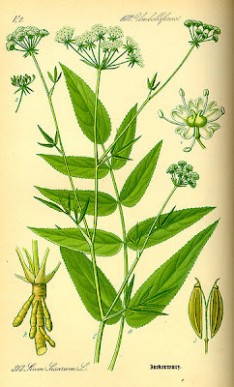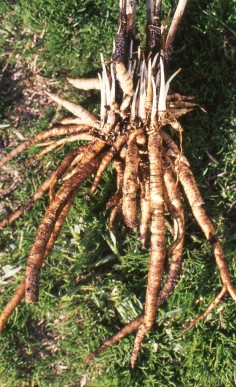Article and photo by Gail Thomas

Botanical illustration of Sium sisarum. Prof. Dr. Otto Wilhelm Thomé Flora von Deutschland, Österreich und der Schweiz 1885 http://commons.wikimedia.org/wiki/File:Illustration_Sium_sisarum0.jpg
When the Friends of Geelong Botanic Gardens published a facsimile edition of its first curator Daniel Bunce’s 1838 The Manual of Practical Gardening adapted to the climate of Van Diemen’s Land, there among the plantings was skirret which produces the ‘sweetest, whitest and most pleasant of roots’.
Skirret (Sium sisarum) is a hardy perennial native to China and Japan is a member of the carrot and parsley family and was enjoyed widely in Europe back in the fifteenth century. The fleshy tuberous sweet white roots form in prongs from a crown, do best in cooler areas and can also be propagated from seed.
Skirret is hardy, grows to around 60cm -1m, prefers full sun but tolerates light shade, likes rich moist soils and should be lifted as required during winter – it is said roots are sweeter after the first frosts.
With a taste hinting of parsnip, carrot and parsley, skirret can be simply scrubbed before being boiled, baked, braised or creamed with mashed potato. It can also be added to soups, stews and curries or grated raw into salads and served simply with a vinaigrette dressing. The root can also be roasted as a coffee substitute and is believed to cleanse the bladder, treat jaundice and other liver disorders.
The Manual of Practical Gardening by Daniel Bunce from the Friends of Geelong Botanic Gardens ph (03) 5222 6053 or [email protected] (see Reviews on this site for more information about this book) and skirret plants from Island Herbs, Snug, Tasmania ph (03) 6267 9218 or [email protected]

